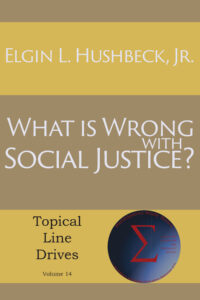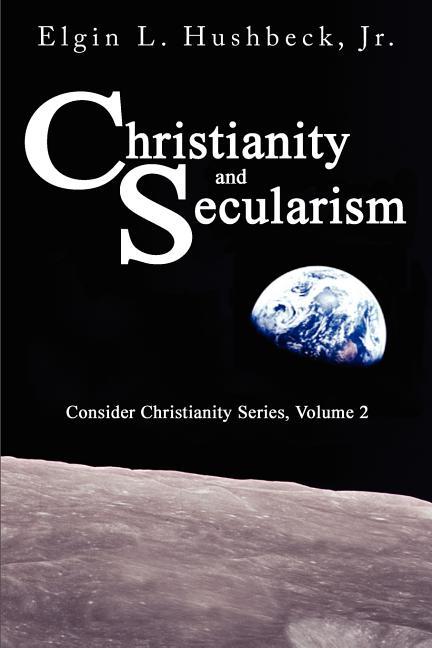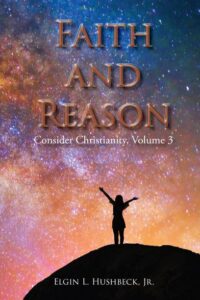A Review of Sam Harris' The End of Faith Part II
Friday, May 4th, 2007 by Elgin HushbeckMay 4, 2007, Wausau, Wi— I pointed out in Part I of my review of Sam Harris’ The End Of Faith: Religion, Terror, and the Future of Reason, that rarely have I encountered a book which starts out with so many errors in so few pages. Further reading has not changed my opinion. In fact the detailed analysis and review I had intended will have to be abandoned as there are simply too many errors (often several per page) and it would take far too long to catalogue them all.
One of the problems is that Harris’ style leads him to make frequent bold and clearly false statements with very little justification. For example in one paragraph Harris claims that “The idea that any one of our religions represents the infallible word of the One True God requires an encyclopedic ignorance of history, mythology, and art even to be entertained.” (p16) To support this Harris simple points to evidence of “cross-pollination” among religious beliefs. There are numerous problems with this claim, but the simple fact is that there are many people who do not have encyclopedic ignorance in these areas, but to the contrary are quite well informed, and yet who not only entertain, but believe that the One True God has given us his infallible word in the Bible.
Harris then closes this paragraph by making the claim that “There is no more evidence to justify a belief in the literal existence of Yahweh, and Satan, than there was to keep Zeus perched upon his mountain throne or Poseidon churning the seas.” (p 16) Again, the facts are contrary to Harris’ claim. Skeptics have for hundreds of years attempted to undermine Christianity, and as I detail in my books, contrary to Harris claims, the evidence for Christianity has grown stronger, and it has in fact been the claims of the early skeptics that have been show to be lacking, and have often been refuted by more recently discovered evidence. For example, given the strength of the evidence, few would now argue that Jesus never existed. Where is all the similar evidence for Poseidon, or Zeus? Such false, but bold claims may be music to the ears of Harris’ fellow skeptics who love to see religion bashed and ridiculed, but it hardly make for the sound reasoning that Harris claims is the alternative to religion.
So rather than a detailed refutation of Harris’ errors, perhaps of more interest would be to apply one of Harris questions to him. Harris asks “How is it that, in this one area of our lives, we have convinced ourselves that our beliefs about the world can float entirely free from reason and evidence?” (p 17) To apply this question to Harris, just how is it that he, while claiming to uphold reason can become so irrational and detached from the evidence when it comes to religion?
We can begin to see this process at work in his classification of religion. Harris first states that people of faith fall onto a continuum, from those who accept diversity to those who would “burn the world to a cinder” to destroy heresy. But Harris immediately proceeds to ignore this and present religious belief as just two groups, moderates (those who accept diversity) and extremists (those who would presumably burn the world to a cinder). Though a highly artificial division, this by itself, this would not necessarily be a problem, except that Harris then goes on to describe moderates in ways that do not fit his previous classification, and herein lays a major error.
Harris claims that 35 percent of Americans believe that the Bible is the literal and inerrant word of God. The problem is that clearly 35 percent of the American people do not fall into his category of extremists. In fact very few if any Christians would. Harris tries to justify this, by claiming most Christians and Jews do not read their Bible enough. While it is undoubtedly true, that still does not explain the millions who do read and study their Bible do not fall into Harris category of extremists. In Short Harris’s categories simply are not an accurate description of reality.
This is the first of several key problems with Harris’ attack on religion. Harris treats religion as if it were, fundamentally, a single entity, centered around a belief in God. In my book “Christianity and Secularism” I go into detail about want is a religion and the errors with views such as Harris. There are simply too many different religions with too many different views to treat them all as a single whole. And yet this is what Harris does as he links extremist suicide bombers to tolerant faithful believers as if they were at the core one. So while Harris’ arguments may seem devastating to skeptics, they are not refuting anything any one person actually beliefs in.
A refutation of some abstract construction called religion is not a refutation of what Christians actually believe. A refutation of some abstract construction call “God’s word” is not a refutation of the actual word of God found in the Old and New Testaments. In short Harris’ arguments are aimed at something that “can float entirely free from reason and evidence” and not at Christianity.






